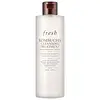What's inside
What's inside
 Key Ingredients
Key Ingredients

 Benefits
Benefits

 Concerns
Concerns

 Ingredients Side-by-side
Ingredients Side-by-side

Water
Skin ConditioningPropanediol
SolventPropylene Glycol
HumectantPentylene Glycol
Skin ConditioningBeta-Carotene
Skin ConditioningHelianthus Annuus Seed Oil
EmollientCaprylyl Glycol
EmollientPhenoxyethanol
PreservativeHexylene Glycol
Emulsifying1,2-Hexanediol
Skin ConditioningHydroxyacetophenone
AntioxidantUndecylenoyl Glycine
CleansingBetaine
HumectantGlycerin
HumectantCarnosine
Skin ConditioningPhospholipids
Skin ConditioningBis-Ethoxydiglycol Cyclohexane 1,4-Dicarboxylate
EmollientAgastache Mexicana Flower/Leaf/Stem Extract
Skin ConditioningCamellia Sinensis Leaf Extract
AntimicrobialIpomoea Batatas Root Extract
Skin ConditioningOryza Sativa Hull Extract
MoisturisingLactobacillus Ferment Lysate
Skin ConditioningSaccharomyces Lysate
Skin ConditioningSodium Benzoate
MaskingOcimum Basilicum Leaf Water
MaskingChamomilla Recutita Flower Water
MaskingCurcuma Longa Rhizome Extract
Skin ConditioningUndaria Pinnatifida Extract
Skin ConditioningAvena Sativa Kernel Extract
AbrasivePEG-60 Hydrogenated Castor Oil
EmulsifyingRosmarinus Officinalis Leaf Extract
AntimicrobialPotassium Sorbate
PreservativeNiacinamide
SmoothingWater, Propanediol, Propylene Glycol, Pentylene Glycol, Beta-Carotene, Helianthus Annuus Seed Oil, Caprylyl Glycol, Phenoxyethanol, Hexylene Glycol, 1,2-Hexanediol, Hydroxyacetophenone, Undecylenoyl Glycine, Betaine, Glycerin, Carnosine, Phospholipids, Bis-Ethoxydiglycol Cyclohexane 1,4-Dicarboxylate, Agastache Mexicana Flower/Leaf/Stem Extract, Camellia Sinensis Leaf Extract, Ipomoea Batatas Root Extract, Oryza Sativa Hull Extract, Lactobacillus Ferment Lysate, Saccharomyces Lysate, Sodium Benzoate, Ocimum Basilicum Leaf Water, Chamomilla Recutita Flower Water, Curcuma Longa Rhizome Extract, Undaria Pinnatifida Extract, Avena Sativa Kernel Extract, PEG-60 Hydrogenated Castor Oil, Rosmarinus Officinalis Leaf Extract, Potassium Sorbate, Niacinamide
Water
Skin ConditioningPropanediol
SolventGlycerin
HumectantPentylene Glycol
Skin Conditioning1,2-Hexanediol
Skin ConditioningSaccharomyces/Xylinum/Black Tea Ferment
Skin ConditioningSapindus Mukorossi Peel Extract
Skin ConditioningDecyl Glucoside
CleansingInulin
Skin ConditioningPEG-40 Hydrogenated Castor Oil
EmulsifyingSodium Citrate
BufferingCitric Acid
BufferingFructose
HumectantParfum
MaskingSodium Metabisulfite
AntioxidantSodium Benzoate
MaskingPotassium Sorbate
PreservativeLinalool
PerfumingWater, Propanediol, Glycerin, Pentylene Glycol, 1,2-Hexanediol, Saccharomyces/Xylinum/Black Tea Ferment, Sapindus Mukorossi Peel Extract, Decyl Glucoside, Inulin, PEG-40 Hydrogenated Castor Oil, Sodium Citrate, Citric Acid, Fructose, Parfum, Sodium Metabisulfite, Sodium Benzoate, Potassium Sorbate, Linalool
Ingredients Explained
These ingredients are found in both products.
Ingredients higher up in an ingredient list are typically present in a larger amount.
1,2-Hexanediol is a synthetic liquid and another multi-functional powerhouse.
It is a:
- Humectant, drawing moisture into the skin
- Emollient, helping to soften skin
- Solvent, dispersing and stabilizing formulas
- Preservative booster, enhancing the antimicrobial activity of other preservatives
Glycerin is already naturally found in your skin. It helps moisturize and protect your skin.
A study from 2016 found glycerin to be more effective as a humectant than AHAs and hyaluronic acid.
As a humectant, it helps the skin stay hydrated by pulling moisture to your skin. The low molecular weight of glycerin allows it to pull moisture into the deeper layers of your skin.
Hydrated skin improves your skin barrier; Your skin barrier helps protect against irritants and bacteria.
Glycerin has also been found to have antimicrobial and antiviral properties. Due to these properties, glycerin is often used in wound and burn treatments.
In cosmetics, glycerin is usually derived from plants such as soybean or palm. However, it can also be sourced from animals, such as tallow or animal fat.
This ingredient is organic, colorless, odorless, and non-toxic.
Glycerin is the name for this ingredient in American English. British English uses Glycerol/Glycerine.
Learn more about GlycerinPentylene glycol is typically used within a product to thicken it. It also adds a smooth, soft, and moisturizing feel to the product. It is naturally found in plants such as sugar beets.
The hydrophilic trait of Pentylene Glycol makes it a humectant. As a humectant, Pentylene Glycol helps draw moisture from the air to your skin. This can help keep your skin hydrated.
This property also makes Pentylene Glycol a great texture enhancer. It can also help thicken or stabilize a product.
Pentylene Glycol also acts as a mild preservative and helps to keep a product microbe-free.
Some people may experience mild eye and skin irritation from Pentylene Glycol. We always recommend speaking with a professional about using this ingredient in your routine.
Pentylene Glycol has a low molecular weight and is part of the 1,2-glycol family.
Learn more about Pentylene GlycolPotassium Sorbate is a preservative used to prevent yeast and mold in products. It is commonly found in both cosmetic and food products.
This ingredient comes from potassium salt derived from sorbic acid. Sorbic acid is a natural antibiotic and effective against fungus.
Both potassium sorbate and sorbic acid can be found in baked goods, cheeses, dried meats, dried fruit, ice cream, pickles, wine, yogurt, and more.
You'll often find this ingredient used with other preservatives.
Learn more about Potassium SorbatePropanediol is an all-star ingredient. It softens, hydrates, and smooths the skin.
It’s often used to:
Propanediol is not likely to cause sensitivity and considered safe to use. It is derived from corn or petroleum with a clear color and no scent.
Learn more about PropanediolSodium Benzoate is a preservative. It's used in both cosmetic and food products to inhibit the growth of mold and bacteria. It is typically produced synthetically.
Both the US FDA and EU Health Committee have approved the use of sodium benzoate. In the US, levels of 0.1% (of the total product) are allowed.
Sodium benzoate works as a preservative by inhibiting the growth of bacteria inside of cells. It prevents the cell from fermenting a type of sugar using an enzyme called phosphofructokinase.
It is the salt of benzoic acid. Foods containing sodium benzoate include soda, salad dressings, condiments, fruit juices, wines, and snack foods.
Studies for using ascorbic acid and sodium benzoate in cosmetics are lacking, especially in skincare routines with multiple steps.
We always recommend speaking with a professional, such as a dermatologist, if you have any concerns.
Learn more about Sodium BenzoateWater. It's the most common cosmetic ingredient of all. You'll usually see it at the top of ingredient lists, meaning that it makes up the largest part of the product.
So why is it so popular? Water most often acts as a solvent - this means that it helps dissolve other ingredients into the formulation.
You'll also recognize water as that liquid we all need to stay alive. If you see this, drink a glass of water. Stay hydrated!
Learn more about Water